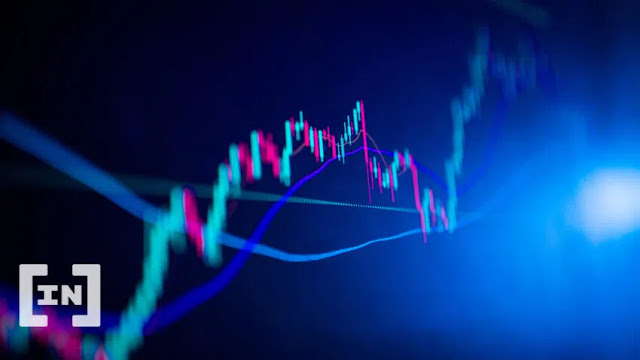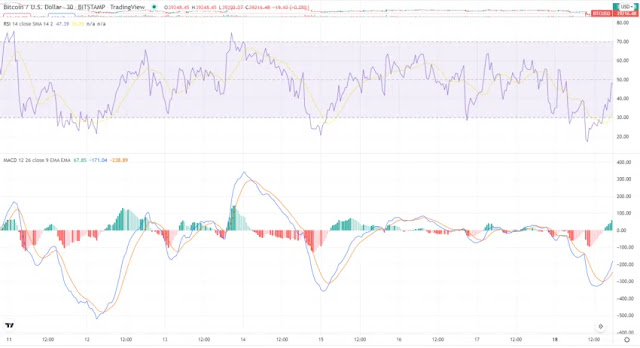The most effective method to Use RSI Indicator in Crypto Trading
The most effective method to Use RSI Indicator in Crypto Trading
Most crypto brokers utilize the RSI pointer to decide cost development and distinguish trade signals. To begin exchanging digital money and figure out how to recognize the market's cost developments, you ought to find out about the part RSI plays in the specialized examination.
Here is a speedy aide on the most proficient method to utilize the RSI marker that will assist you with beginning exploring the universe of digital money exchanging.
In this aide:
What is RSI?
RSI represents Relative Strength Indicator and is one of the most famous pointers for cryptographic money exchanging. The RSI marker estimates force, cryptographic money value (it depends on the end endlessly cost development speed. This pointer will let you know when digital money resources are overbought or oversold.
The RSI pointer was presented in 1978 by J. Welles Wilder Jr., who is viewed as the dad of specialized pointers for exchanging.
Brokers utilize the RSI marker to attempt to anticipate the future cost of digital forms of money. While the marker can be deceiving on occasion, brokers that comprehend how it works can find out about the future cost developments. RSI is a significant marker for performing specialized examination.
Brokers trust the RSI marker to recognize market signals and tell when the market is either bullish or negative. The RSI is a line chart that wavers between two limits and can go from zero to 100.
The overall agreement is that when the RSI is underneath 30%, the market is oversold, and when the RSI is above 70%, the market is overbought.
How to compute RSI?
At the center of this RSI marker stands a piece of fundamental data for digital currency merchants, which shows them the typical vertical cost development versus normal descending cost changes over a default 14-period time span. That implies the RSI marker estimates the last 14 candles, however each exchange can change the ideal time period, to suit the ideal exchanging methodology. The time period can be shown in weeks, days, hours, or minutes.
The recipe for computing the RSI marker is:
RSI = 100 − [100/(1 + RS)]
Here, RS = Average Gain/Average Loss
Normal Gain = Sum of gain per period/time period
Normal Loss = Sum of misfortune per period/time period
In any case, merchants shouldn't stress over computing the RSI recipe, since all exchanging stages will give the RSI values and show the RSI line diagram available graphs.
How to peruse the RSI marker?
BTC RSI: TradingView
Normally, the RSI marker has three lines. There are two straight-spotted lines, one at the top and another at the base. There is a wavy line in the center, which can some of the time get over the other two lines, yet it normally sways between the two.
The wavy line is the RSI marker, and its worth shows on the off chance that the exchanging resources are being overbought or oversold. At the point when the RSI marker arrives at a worth of 30 or lower, the resource is oversold, and when it crosses a worth of at least 70, the resource is oversold.
It is vital to take note of that on the grounds that a resource is overbought or oversold, doesn't imply that the market will change. It essentially implies that things are moving quicker than they ought to be.
The Relative Strength pointer can assist with deciding economic situations and perceive cost patterns. On the off chance that the RSI goes too far at 50, it is a pattern. On the off chance that the RSI gets over the 50, it demonstrates a positive pattern, and it implies that costs are rising (bullish market). The marker falling under 50, connotes that costs are falling (negative market).
Regardless of all the data given by the RSI, merchants need to utilize different pointers to produce trade flags and guarantee that the pre-owned exchange signals are all around as exact as could really be expected.
RSI versus MACD
MACD, or Moving Average Convergence Divergence, addresses another famous energy pointer. It estimates the strength of the resource's cost development.
The MACD pointer estimates the dissimilarity of two Exponential Moving Averages (EMAs) - generally a 12-period EMA and a 26-period EMA. The MACD line is the aftereffect of their distinction. A nine-period EMA line, alluded to as the sign line, is displayed over the MACD line. Numerous brokers use it to recognize momentary trade signals.
At the point when the MACD crosses over the sign line, it's a purchase signal. At the point when the MACD line crosses beneath the nine-period EMA signal line, it is deciphered as a sell signal.
The RSI pointer provides merchants with a thought of the new cost changes, while the MACD is a relationship between's the two EMAs. Numerous dealers utilize the two markers together to attempt to gauge future cost developments and distinguish exchange signals.
While the RSI and MACD are both energy pointers, they measure various components, and that can prompt disconnected signals. For example, on the off chance that the RSI has a worth of north of 70 for a more extended timeframe, it could show that the market is overbought, which might persuade dealers to think that a value revision could happen. And yet, the MACD marker might in any case recommend that the costs could arrive at better upsides.
The two pointers are integral and are frequently utilized together. While the MACD utilizes dramatic moving midpoints, the RSI outlines a chart of late lows and highs. Recognizing a moving business sector is a lot simpler utilizing the MACD marker, and the RSI uncovers pattern inversions by outlining the overbought and oversold cost levels.
Tags
cryptocurrency




